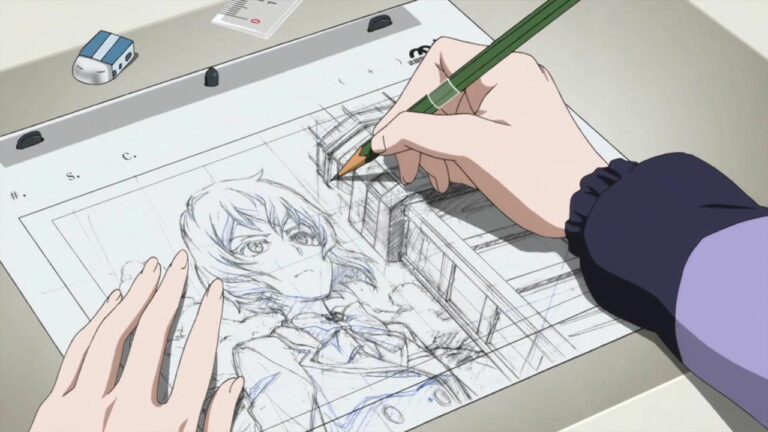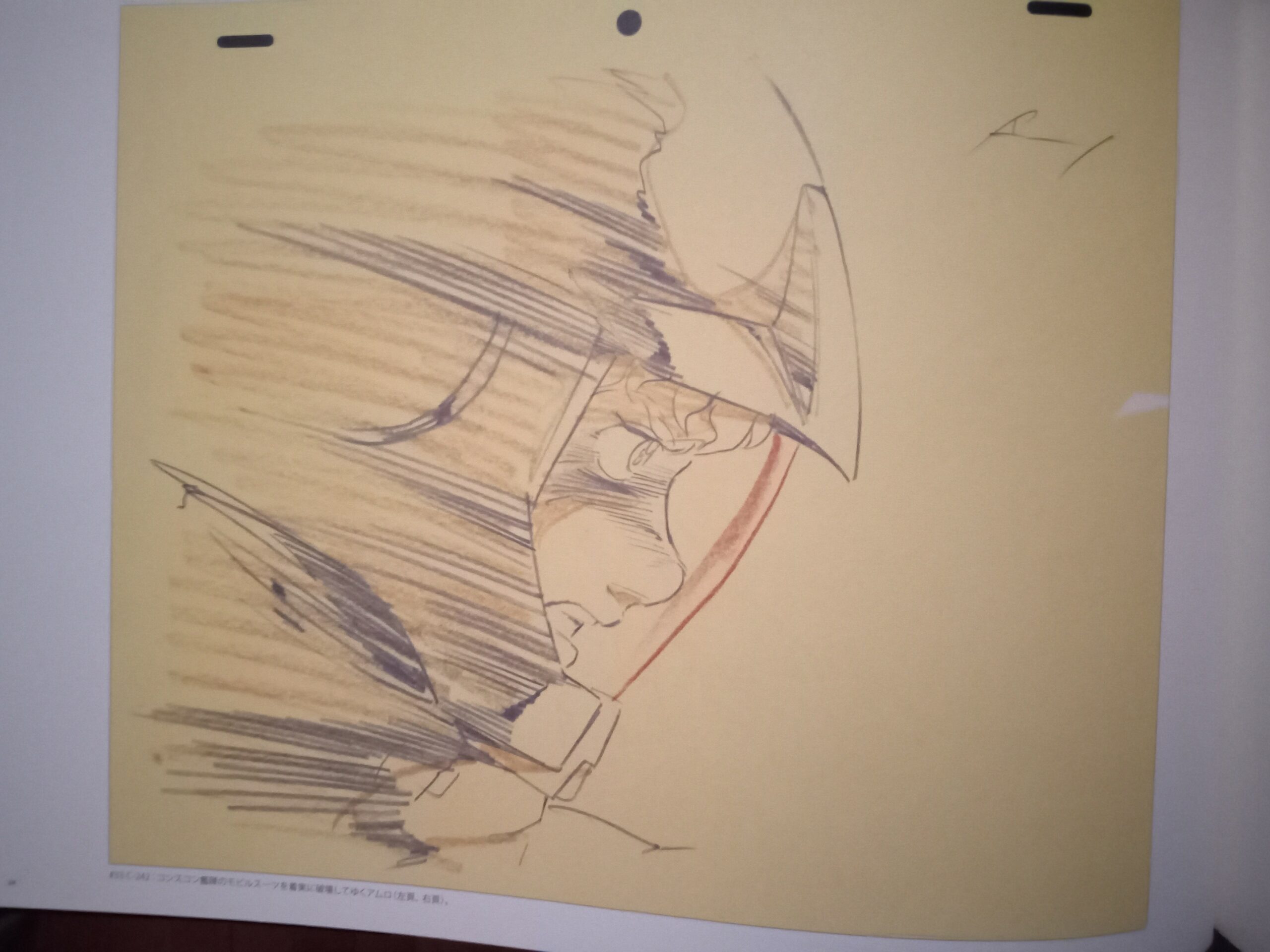One of the most challenging aspects of the animation production pipeline to explain to those who have not looked into the anime production, or are still learning about it, is the role of “animation directors” and all of the different types there are, especially considering they’re all pretty different from how western animation studios use the term.
In the western sense, animation directors refer to the person or people responsible for directing storyboards, character designs, the animation itself, and other technical aspects of an animated film. They, of course, are under the overall direction of the film or series director. They have a lot of responsibilities on a project, and should be acknowledged for these feats, but remember not to confuse them for the director themself.
In Japan, though, and by association in South Korea and China (due to outsourcing and similar production pipelines and systems being adopted), it’s not always so clear unless you come to understand what each credit means in the original languages. What we translate as “animation director” is actually several credits, each with their own nuances, but which all can be differentiated from each other without too much difficulty (usually).
Types of animation directors
Animation Directors as “Drawing Directors”
The most basic form of the credit is the sakuga kantoku (作画監督; hereinafter referred to as “sakkan”), which we’ve come to translate as “animation director”, but more accurately it’s like a “drawing director.” Kevin Cirugeda’s article on ANN explains what this credit usually entails pretty well: these people are in charge of correcting key frames and also layouts (also check out his article for some other credit explanations too). ‘Correcting’ is a word that’s a bit loose here, but they basically either fix drawings that aren’t up-to-par, or just add a bit of their own style if they feel like it– or both. You can really feel the different sakkan styles in a series like Noein, which usually has one or two sakkans per episode who are all making corrections with their own styles, but of course focusing on maintaining the series’ quality.
Which drawings are they specifically correcting, though? They’re correcting the genga, known to most as “key animation”, but it should be noted that it isn’t always animation per se, as it can be a single drawing that isn’t part of an animation sequence too. Genga consists of a layout, as well as a rough drawing (rough genga) of characters or anything else that an animator would draw in the scene. Afterwards, a sakkan checks and corrects it however they need or have time to. And of course from there, it’s either tied-down and cleaned-up by the genga artist (meaning they make the messy lines into clean lines and so forth), or by a separate ni genga (second key) animator who is usually a junior animator or someone who specializes in tie-downs.
Nowadays, sakkan rarely are able to implement their own stylistic qualities into their corrections. As can be inferred by the constant horror stories of the industry, they just don’t have the time to do that for one reason or another (usually it can be simplified to scheduling issues and such). In the 2000s, 1990s, and the years prior, each episode to a series would normally have 1 sakkan, and occasionally one or two more, but recently it’s normal to have 7 or more. Attack on Titan (2013-present) has historically had absurd production schedules, forcing studios WIT and MAPPA to both hire an extraordinary number of sakkan episode by episode to make ends meet. Season 1 of the series’ TV airing notably had a significant number of animation errors, and the recent MAPPA seasons have also had a lot of issues in consistency. The final episode to the second-cour of The Final Season (episode 87) had 20 regular sakkan– and that’s not including the special roles.
Silver Link’s Deep Insanity: The Lost Child lists whole animation studios for sakkan work instead of individual people, and they make up half of an entire episode’s sakkan list at one point. We don’t even have the opportunity to know which people are specifically credited for this important work. It’s a common occurrence now, and we’ve all seen it in the 90s with Korean and Chinese studios being credited for painting and in-between work, which is tragic as it is for several reasons, but the fact that whole studios are getting credited for work like this is pretty terrifying. Imagine if you were interested in knowing who supervised or animated parts of The Hunchback of Notre Dame but looking at the credits didn’t tell you because they say “Quasimodo Animation Supervisor: Walt Disney Pictures.” Unless someone writes about it from the inside, or speaks about it, you just won’t know; or imagine if that was you animating it, and you just didn’t get credited, that would kind of suck, wouldn’t it?
Other Types of “Drawing Directors”
No conversation about sakkan is complete without talking about ‘special’ types, however. First and foremost is the sou sakkan, better known as the “chief”, “total”, or “general” animation director (総作画監督), who basically oversees the work of the sakkan. Historically (and by that I mean in the 1980s-2000s), this person was in charge of overseeing an entire series and maintaining the key animation and layout quality by correcting and overseeing sakkan work. In doing so, this allowed for normal sakkan to put in their own personalities and styles while also having someone oversee them and making sure the production doesn’t falter too hard across the entirety of a series. Nowadays, the sou sakkan oversees all or some of the animation in… episodes, and very rarely across an entire series, while trying to keep everything on a specific model– which isn’t inherently bad, but it can be creatively limiting when everyone is focusing on following the character model sheets 1:1 instead of giving animators creative liberties. Veteran animator Jun Arai has humorously pointed out instances of the number of sou sakkan occasionally being greater than the number of sakkan on a single episode, which showcases a troubled schedule.
Besides the chief drawing director, there are a number of specialized types of sakkan that exist. The aforementioned Attack on Titan, for example, has had both “effects sakkan” (エフェクト作画監督), “action sakkan” (アクション作画監督), and “titan sakkan” (巨人作画監督). These are basically just roles specifying someone as working on a specific part of the animation. The “effects” person only deals with drawings of effects like smoke or drawn fire; the “action” person deals with drawings that are specifically from action scenes; and the “titan” person specifically deals with drawings of the titans in that series. Of course, there’s also sakkan for mecha/mechanical animation, ones that deal specifically only with layouts, ones that specifically deal only with rough genga, a plethora of assistant roles that have a few differences, and so forth.
Just as a fun fact, the final episode of Attack on Titan: The Final Season’s 2nd cour has ~30 sakkan in total including the different types, and that’s for a single 24-minute episode, meaning that some of them only corrected drawings for… well, less than a minute of actual screetime.
The “Other” Type of Animation Director
Unfortunately, the industry isn’t always as easy as “I know the Kanji/Katakana, therefore I can insinuate exactly what [person] did on [this] series.” There exists a credit that directly translates to “animation director”, and that is アニメーションディレクター. Don’t be fooled, though, as simple as it may seem, it is probably the most convoluted credit ever (according to me, at least). It can be interpreted in about three different ways as far as I currently know, so I’ll try my best to explain them.
First and foremost is the oldest usage of the term, which happens to originate from the 70s or late 60s. Most notably is Yoshikazu Yasuhiko’s role in Mobile Suit Gundam (1979). There tends to be some misinformation that spreads about Yasuhiko’s job as a pseudo-director of sorts, but allow me to specify: he was not. Yasuhiko’s role as the aforementioned “animation director” is much closer to that of a sou sakkan in that he supervised much of the animation (going uncredited for quite a bit of it), but he also drew a large number of the layouts in the series, which are uncharacteristic of a traditional sakkan. For example, according to Hideaki Anno’s book on Yasuhiko and Ichirou Itano, the drawing below is a correction by Yasuhiko.
Yasuhiko also drew the layouts for several episodes by himself, including episode 1 (below). This is, of course, not the only time the credit was used like this. Early works by studio Bones in the 2000s also occasionally used the credit which, according to veteran director Hiroyuki Kitakubo, was used in the same way as Yasuhiko’s credit in Gundam.
Another way the credit is used is as the aforementioned sort of “pseudo-director.” In this case, the “animation director” not only does traditional sakkan work and checks layouts, but they also have duties that normally are performed by the director, such as storyboard checks, as well as acting like a “bridge” between the director and animation team. As I mentioned in one of my Legend of the Galactic Heroes articles, a good example of this is Keizou Shimizu’s role in the 3rd and 4th seasons of the series, according to this interview with him from 1994. In his role, Shimizu was even given responsibility like supervising parts of the character’s animations and making sure they each had ‘nuances’ that were respective of their characters.
The final version of this credit that I know of is when “animation director” is referring to a person who has a lot of technical knowledge and ends up working on defining and supervising most of the animation of a project. It’s the closest usage of the credit to the west’s “animation director” by Japan, and it’s probably closer to being a ‘technical director’ of sorts.The works of Polygon Pictures’, whose president confirmed what the role meant, are easy examples: Hiroshi Ootake on Human Lost, and Reiji Nagazono on Knights of Sidonia: Love Woven in the Stars. One question for why Polygon Pictures specifically developed a mix of a westernized and easternized production pipeline such as this can be easily solved: they are an international studio that works on a broader global scale than most Japanese animation studios. According to the company’s president, who had a digital conference at Animahenasyon in November 2021, it was ex-WETA member Hiro Muramoto who introduced Polygon Pictures to a standard “pipeline”, and ex-Pixar member Leo Hourvitz who introduced the company to the concept of “workflow.” This probably answers that question.
Special Thanks:
Ukrainian Z’gok, for the pictures of Yasuhiko’s layouts
Shuzo John Shiota, president of Polygon Pictures, for providing input on Twitter
Featured image: Shirobako, © SHIROBAKO Production Committee



Participate In Discussions